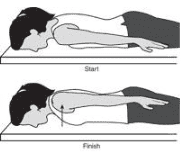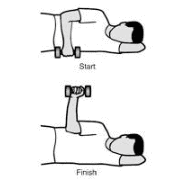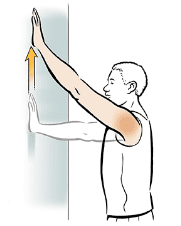Shoulder pain is one of the most common conditions that we see at Andersonville Physical Therapy. While pain in our shoulders can be very limiting and frustrating for patients, it is typically very treatable with physical therapy.
The most common disorder of the shoulder is called Subacromial Pain Syndrome (previously referred to as Impingement Syndrome), and it accounts for about 44–65% of all complaints of shoulder pain during a physician’s office visit. This comprehensive term reflects the many structures located under the acromion (the bony bump on top of the shoulder blade) that can cause pain. This can include fluid accumulation, bursa, and, most notably, the rotator cuff tendons.
Over the last 40 years, our understanding of what causes shoulder pain has evolved, therefore our approach to treating it has changed. For many years, researchers thought that having a larger or hooked acromion was the primary cause of this type of pain. They also thought that repeated overhead movements would compress the subacromial space, leading to inflammation and damage to the rotator cuff tendons. These issues in turn would cause pain and dysfunction in the shoulder. These explanations would make patients believe their tendons were wearing away, and there was nothing they could do about it except have surgery to fix these structural problems.
New evidence has mounted to challenge these beliefs. Subacromial pain is not as simple as structures getting pinched, and the fix is not as simple as removing the bone doing the pinching. Different arm positions known to “impinge” the shoulder (most commonly reaching overhead) are normal positions that everyone uses in their daily life. So why do some people have pain in these positions?
A possible explanation is that the shoulder muscles may have a tougher time tolerating these positions and movements if they are relatively weak from a sedentary lifestyle. This theory can be similarly true for people who frequently work in overhead positions. While they are stronger and more active than their sedentary counterparts with pain, their shoulder muscles still may not be strong enough to recover quickly and tolerate daily use doing more difficult tasks.
For both of these scenarios, ensuring the patient has full shoulder mobility and strengthening the muscles in the area will be key in order to build up tolerance to everyday use of their arm in a variety of positions.
At Andersonville Physical Therapy, we treat Subacromial Pain Syndrome by first doing a comprehensive evaluation with a thorough patient interview and physical examination of the shoulder and any other body parts that may be influencing this pain. We then collaborate to build a customized plan to reach each patient’s specific goals. This will often involve modifying or taking a break from activities that aggravate pain in order to decrease symptoms. We focus on addressing any issues we found in the evaluation, which may include shoulder joint or upper back stiffness, rotator cuff and shoulder blade weakness, and poor postural behaviors. Once these begin to improve, we can start to reintroduce the previously aggravating activities at a gradual pace in order to build the patient’s confidence and ensure pain does not return.
Exercises to help maintain strength and mobility
If you are experiencing pain similar to what we described above, try these 3 exercises, which are meant to improve overhead mobility, rotator cuff strength, and shoulder blade strength.
Prone scapular retraction
Set-up: Lie down on your stomach with a rolled up towel underneath your forehead and arms at your sides with palms facing downward.
Action: Using the muscles in between your shoulder blades, pinch your shoulder blades together. As shown with the arrow in the picture, the top of your arm should pull up towards the ceiling, but it should not shrug up towards your ears. Hold this position for 3-5 seconds, then relax completely. Try 2-3 sets of 10 to start.
Sidelying external rotation
Set-up: Lie down on your side with a rolled up towel under your elbow. Your elbow should be bent to 90 degrees and draped across your stomach just like the picture. No weight is necessary at first unless it feels too easy.
Action: Squeeze your elbow into the rolled up towel and rotate your forearm up towards the ceiling while maintaining the elbow bent to 90 degrees. Once you’ve gone as high as you can, slowly return back to the starting position. Try 2-3 sets of 10 to start.
Flexion wall slide
Set-up: Stand facing a wall with a pillowcase or towel in your hand.
Action: Lightly push forward into the wall and slide your hand up the wall as high as you can. Lean forward for a stretch once you reach the top. Hold for a second, then slowly return to the starting position. Try 2-3 sets of 10 to start.
These exercises are meant to be done pain-free, but mild and stable amounts of pain are acceptable as long as they do not make your pain worse after you are done.
If these exercises are too painful to try, please schedule an evaluation with one of our physical therapists. We can work with you to help manage your symptoms and get you back to your regular activities.





Comments